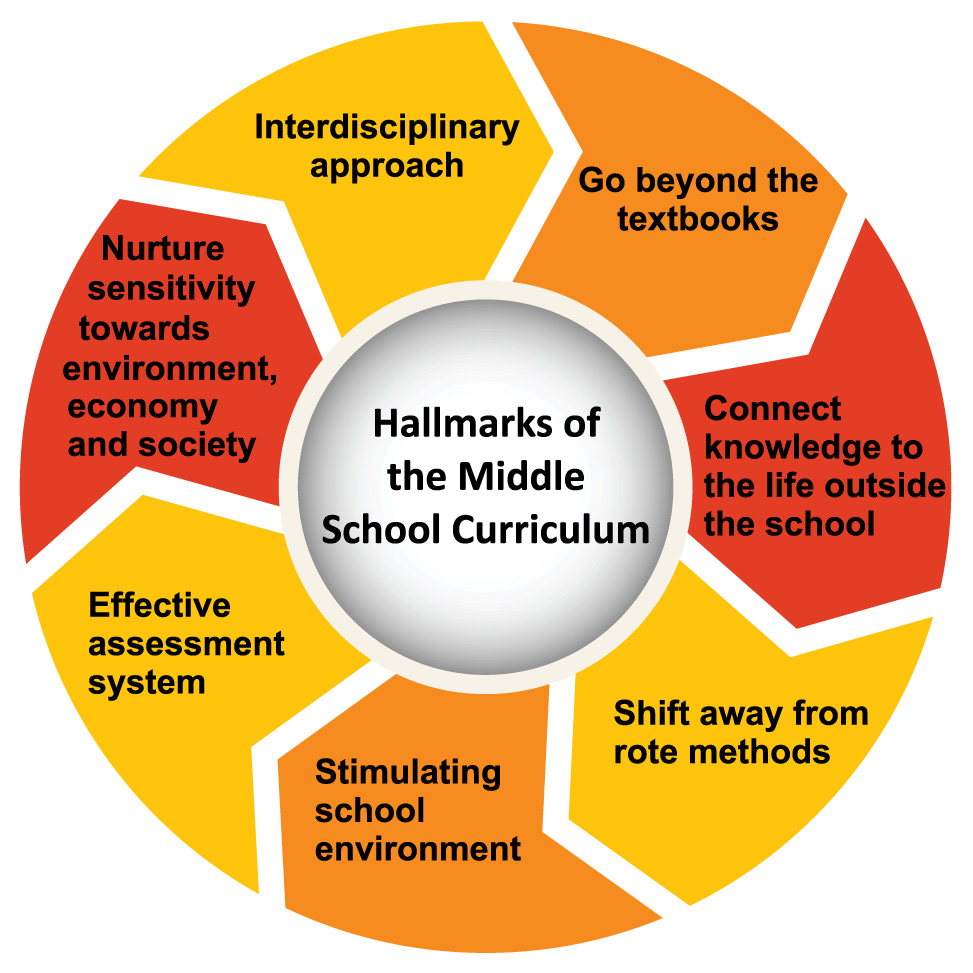Secondary curriculum
Secondary curriculum. Developing competencies.
In the secondary curriculum, we begin teaching separate subjects, but integration and interdisciplinary teaching approach continues to take place wherever appropriate. The methodology is constructive, taking the child from his/her known context to the unknown, from concrete to abstract and from local to global. A wide range of innovative methods, such as active learning, cooperative activities, inquiry and experience-based learning is used in the classroom. These methods aim at developing competencies rather than mastering the given content knowledge.

Secondary Years. Establishing real-life connections.
Our focus is to take students away from rote learning, make them go beyond the textbooks and establish a real-life connection with the information that they gather at school. The areas of learning covered within its parameter are – English Language Arts, Hindi, Third Language, Mathematics, Science, Social Studies and ICT (Information and Communication Technology). Besides the scholastic areas, there are various co-scholastic areas that are a part of the curriculum and give the students the opportunity to express themselves - Performing Arts, Visual Arts, various individual and team sports, Community Service Projects, Life Skills and specialised sports programme (SPEED).

Soul Science, Excursions, Projects, Dance, Fine Arts, Music,..
The study of ‘soul science’ will help children to deal with different emotions, challenges, stress, anxiety and social insecurity in life. It teaches and guides them on concepts of leadership and motivation, and how to regulate personal and school life through time management and other lessons, which have been developed through extensive research and application by our R&D team. The wide range of scholastic and co-scholastic opportunities offered helps instill in children confidence and discipline.
The focus on developing communication skills helps them appreciate the value of education, as it reflects in their ability to express themselves, in addition to developing pragmatic skills. Field trips, excursions, activities, projects and presentations provide experiential learning opportunities. Dance, Fine Arts, Western and Indian Music, Yoga, Speech and Drama promote holistic development.

Assessments. Ensuring no child is left behind.
As we believe in assessing children on a regular basis using a variety of tools and techniques, we have Ongoing Assessments and Term End Assessments. Ongoing assessment occurs regularly throughout the instructional process. Periodic tests include a range of tools like rubrics, checklists, projects, tasks, written tests, etc. Term End Assessment is a test, usually given at the end of each term. These are part of paper-pencil tests, however, they include questions which need comprehension, analysis and critical thinking.
As we look at the holistic development of the child, we also ensure that no child is left behind. The research done on the learning process, learning styles and multiple intelligences are taken into consideration at every stage of designing.
